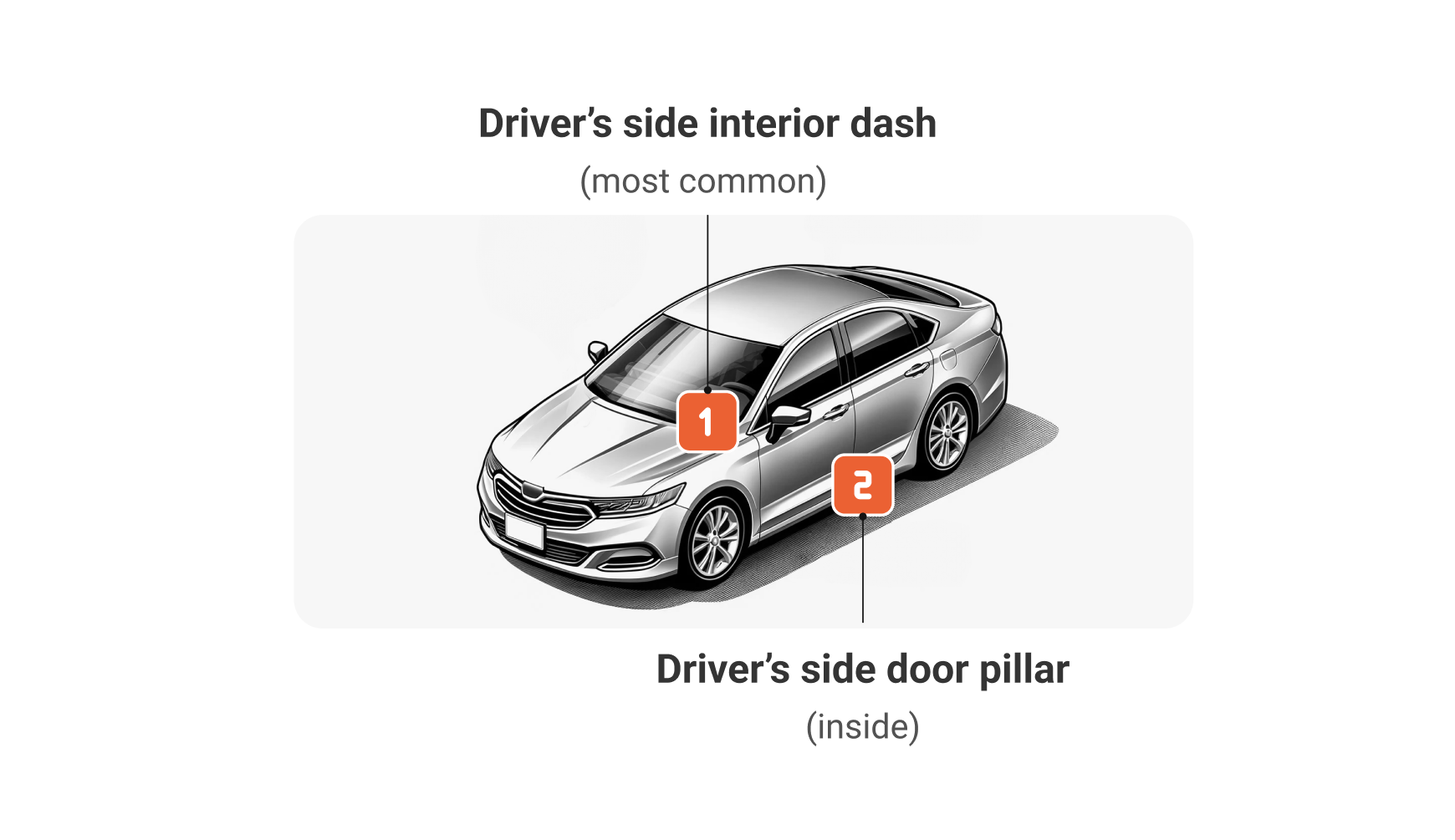What you’ll need
- A valid access (bearer) token
- The vehicle’s identification number (VIN) and its brand
- A way to reach out to the vehicle’s owner for consent
Locating the VIN

Let’s get started
1
Start the onboarding process
Create an Entity Onboarding Request, setting the to
You’ll need to specify a supported and the VIN as a unique device .
EV.You’ll need to specify a supported and the VIN as a unique device .
List all available brands Entity types to learn about the available options.
EVs are identified by their VIN (Vehicle Identification Number).
2
Check for required actions
In most cases, the onboarding request will have the
Pending until a required is completed.How an action should be completed, depends on its .- Actions of type
Redirect(most common) contain a . You can redirect your user here or share this link directly with the vehicle’s owner to complete the action. - Actions of type
Consenthave to be completed through the vehicle manufacturer’s app or by responding to a notification. They also contain a for more information on how to complete the action.
Response (Body)
3
Track the onboarding status
Periodically poll the Onboarding API to check if the status of your request has updated to
Succeeded. Once it’s complete, you’ll find the newly created Entity and its ID in the object.You can reference the when using our Readings API, Commands API, and our Charge Sessions API.Work with your newly created Entity
Tip: Take note of your Entity ID before you get started with our APIs.Readings API
Observe the state of the vehicle.
Commands API
Send charging instructions.
Charge Sessions API
See when the vehicle charged.